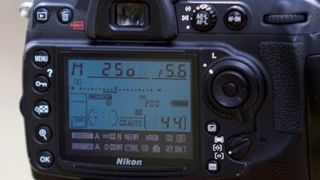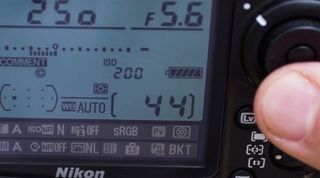
Getting your landscapes sharp from front to back is tricky, but exploiting a phenomenon of depth of field can help you get a tack-sharp scene every time.
Depth of field is the distance either side of the focal point that is 'acceptably sharp'; it's determined by aperture, focus distance and focal length, and – crucially – it extends twice as far beyond the focus point as it does in front.
The point of using hyperfocal distance focusing is to focus at the point at which the depth of field stretches to 'infinity' so that the maximum possible amount of the scene appears sharp.
You get a greater depth of field at shorter focal lengths and narrower apertures, so if you shoot at an aperture of f/16 on a 16mm wide-angle lens with a full-frame DSLR, the hyperfocal distance is 50cm. Focusing at this point will make everything from roughly half this distance (25cm) to infinity appear sharp.
Before dialing in your lens's smallest aperture, though, you need to take 'diffraction' into account, as images actually become progressively softer at narrow apertures due to light being diffracted by the aperture blades.
This becomes noticeable beyond around f/16 on an APS-C (DX) format sensor, or f/22 on a full-frame (FX) one.
Maximise depth of field in your landscapes

1. Keep it steady
Shooting with a tripod doesn't just keep the camera rock-steady for long exposures, it also gives you more time to perfect your composition and focus precisely.
Get daily insight, inspiration and deals in your inbox
Get the hottest deals available in your inbox plus news, reviews, opinion, analysis and more from the TechRadar team.
Putting your camera on a tripod enables you to set the hyperfocal distance with care.

2. Stay in control
Swapping to Manual mode gives you complete control over your exposure, not just your aperture. Set the focal length to fit your scene – we shot at 35mm – and bear in mind that the wider the angle, the greater your depth of field will be.

3. Work it out
Use a hyperfocal distance app or our tables (see the next page for more on both) to look up your focal length (35mm in our case) and desired aperture. Shooting at f/8 on our full-frame DSLR gives us a hyperfocal distance of 8.122 metres.

4. Measure it out
Everything from around half the hyperfocal distance (in our case, the hyperfocal distance is 8.122 metres, so that's 4.577 metres) to the horizon will be sharp. Unless you're carrying measuring tape, you'll need to judge the hyperfocal distance by eye, or roughly pace it out.

5. Focus with care
Use autofocus to focus on a point at the hyperfocal distance, then switch to manual focus to lock the focus. If there's nothing at the appropriate distance for your Nikon's autofocus to pick up on, try focusing on yourself with a remote release.

6. Beat the shakes
You'll need to avoid touching the camera in order to prevent camera shake, so use a remote release (or your Nikon's two-second selftimer). Disable image stabilisation, too, as this can cause shake when shooting on a tripod, and set mirror-up.
